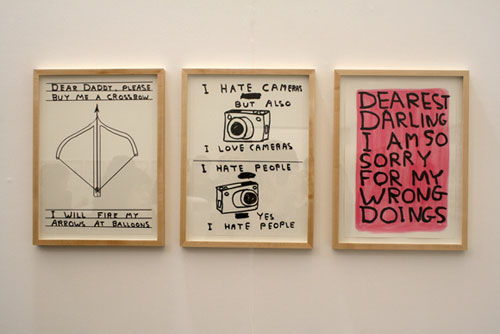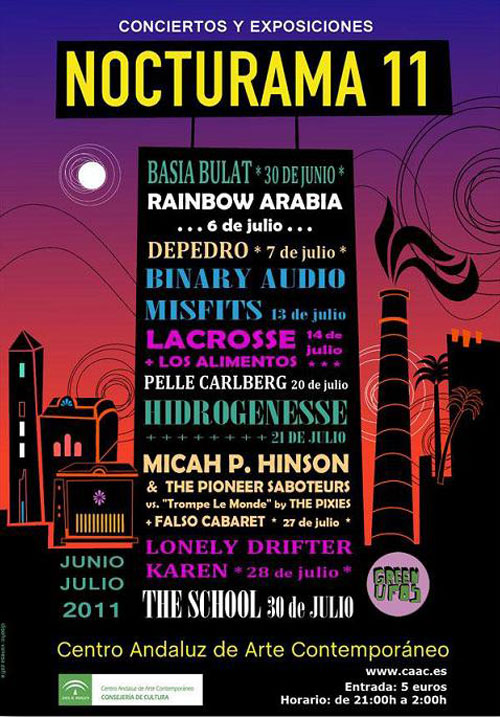Mónica Boixeda
Miró is, undoubtedly, one of the most important Spanish-born artists, not only for the art that he managed to create throughout his life but also for his way of thinking and how he expressed it in his works. Here, the exhibition ´Miró. His fight against the dictatorship´ presents no less than 113 works that go from engravings, drawings, documents, lithographies and sculptures that the Barcelona-born artist made from 1966 until 1977. In this time Miró based his art, above all, in criticising General Franco and his dictatorship. The works of this exhibition belong to the collector Pere A. Serra, and one of the most important works is a figure in three dimensions that represents the theatre figure ´Mori el Merma´ from the group La Claca in 1977. This creation is a representation of how horrible the regime was. ´Miró. His fight against the dictatorship´ will be presented in the Picasso-Casa Natal Foundation until October 2nd, and it will be commissioned by Dolores Durán and it will be the first exhibition that will reflect Miró´s fight against Franco. One of the most important summaries that they make is the relation between Miró and Alfred Jarry on Ubu. Ubu is a character that appears in different works of Jarry through which Miró identifies the dictator. In 1966 the Spanish artist created the first series of litographies in relation to this dictatorial figure. A book edited by Tériade called ´Ubu Roi´, possesses the text by Jarry and 13 engravings of Miró. Time after, in 1971, the second series was presented, which carried the name ´Ubu as Beléares´, where there are 23 engravings...
Mónica Boixeda
If there´s something that Sevillian tradition is about is tapas. If you want to have some tapas to eat, El Rinconcillo is a perfect place in the Spanish city.
Mónica Boixeda
Two young people from Seville got together to create Binomio, a restaurant where not only you can enjoy food but also live a sensory experience.
Mónica Boixeda
Zelai is known for presenting an alternative to Seville´s cuisine. It also possesses an innovative and avant-garde design with an elegant and relaxed atmosphere.
The Only Team
The Taurine Museum, which was inaugurated in 1989, holds collections dedicated to the Real Maestranza of Cavalry of Seville and to bullfighting.
Mónica Boixeda
Extraverde is the first shop and restaurant in the city of Seville that specializes in extra virgin olive oil and derivatives.
Mónica Boixeda
Until the 11th of September, the Seville Center of Contemporary Art (CAAC) is presenting the work of Annika Ström. The show, titled Song by., is a part of the museum´s “La Canción como Fuerza Social Transformadora ” project. During the 20th century, popular music went hand in hand with all the revolutionary movements, like a motor for mobilization, and catalyst for transforming dreams. This is how music and culture transformed in spheres of ideological struggle, with many artists´ work being defined by their support or condemnation for certain political positions; they were art works and music which included a kind of kind of social compromise. During the Spanish Civil War, music was a crucial part of the trenches; it accompanied the political processes which culminated in the defeat of the Republic – and it was an emotional and political trigger for resistance and exile from the Franco dictatorship. In the same way, the revolutions in the 60s taking place in far flung places round the world became a kind of mode of inspiration; a motor for creators of revolutionary music, such as Violeta Parra and Víctor Jara in Latin America. This special role which music takes is what this exhibition seeks to analyze and investigate, through the work of artists who work with music as an explorative vehicle for new concepts in a post-modern society. With this in mind, the museum has centered its show around two conceptual artists whose work is based on the idea of music as an explorer of emotion and behaviour; Annika Ström and Ruth Ewan. Annika Ström was born in Helsingborg, Sweden in 1964....
Mónica Boixeda
The Andalusian Centre of Contemporary Art develops an interesting project destined to highlight the role of music in cultural and social transformations, whose name is La Canción como Fuerza Social Transformador (The Song as a Social Transformation Force). In this frame a series of cultural and artistic activities take place that have a relation with the role of music and in August it presents the 7th edition of Nocturama. The Andalusian Centre has conceived Nocturama as a ludic way of getting the public closer to art, through nocturnal concerts and contemporary art exhibitions that are part of this new summer programme. In this edition they have organised ten concerts that begin on August 3rd and end on September 1st. The national bands with international projection that will participate in the programme, transit through all contemporary musical genres, following the idea of the project that investigates the role of the song as a social transforming force. Before each concert, they´ll present music videos made by the Canada production company. The first invite is the Spanish singer/songwriter Alondra Bentley. Her entry to the stage was in 2006. Her first album, Ashfield Avenue, confirmed her as one of the most sought after female voices in Spain. She´s currently working on the production of her second album and in music for film. Her presentation will be on August 3rd. August 4th will see Triangulo de Amor Bizarro come on stage, who broke into 2010 with their appearance in the press because of their first music video with Luís Cerveró and their successful tour in Central America. Among their hits there´s the digital single Amigos...
Mónica Boixeda
While it is very possible that nothing hurts as much as music is also true that perhaps nothing has a similar potential to transform the personal and collective reality of humanity. Perhaps it is not at all strange if we view the universe and life in a Pythagorean manner, as a harmony of musical worlds or spheres, in alignment or with the ancient Hindu tradition that places dancing in the universal creation and destruction of Shiva with the revelation of cosmic truth, either way akin to modern theories of quantum strings that posit a multidimensional poliverse that consists of simultaneous non-vibrational states of a non poetic sense of eternity. In Woody Guthrie´s guitar you could read the phrase “This machine kills fascists” to illustrate the case in a straightforward way. Through the affiliation of music social changes are almost as old as the history of mankind. It is possible that at first songs came to bring the collective union together according to a rhythmical pattern, creating a harmonious union between the different people involved in tasks. Similarly, the great epic poems that were sung for generations contributed to the feeling of belonging to a community with a history and common values. Throughout the Middle Ages poems remained inseparable from music, the art of the Muses contributed decisively to the creation of a collective imagination of a world view of a particular generator that could in turn be subverted by the very form of expression . Thus, we could genuinely generate movements such as the Goliards or the dance of death, where the songs were the essential element, not to...
Mónica Boixeda
We tend to have a black and white vision of reality so that any new archaeological discovery is likely to either be dismissed, ignored or deactivated so you mark it as casual and unrepresentative, either being described as revolutionary and capable of creating a new paradigm when it is convenient. In all likelihood the epithet “grotesque” (Grotta, an Italian word that means a cave or a crypt) comes from an accidental discovery that occurred in Rome during the height of the Renaissance (XV century) in the subsoil of the Titus hot water springs. There were a number of ornamental paintings whose essential features was in the words of Mikhail Bakhtin, author of the brilliant book The popular culture in the Middle Ages and the Renaissance an “a fantastic unusual and delicious mix of plants, animals and humans that intertwined and transformed fantastically together” Since this type of art did not match the current renaissance ideas of aspiring to be synonymous of the recovery of the full civilization of antiquity, it was considered at first to be an anomaly, a product perhaps of the demented imagination of a solitary artist. Only with the passage of time, when more examples of this art was found in different parts of ancient Greece, they had to accept that the grotesque was a common manifestation in the classical natural world we lived in with what we considered that the time after his only aesthetic canon, pushing through the idea of ??historical overlaping of different forms that catch the substrates above the elements that are convenient for them due to political legitimacy reasons that have...

 English
English Français
Français Deutsch
Deutsch Italiano
Italiano Español
Español





